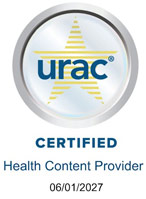Does this test have other names?
Serum Fe
What is this test?
This test measures the level of iron in your blood.
Iron is an essential trace element in your blood. It helps your body make healthy red blood cells. Red blood cells carry oxygen throughout your bloodstream.
Having too little or too much iron can lead to health problems. Too little iron in your body can cause a condition called anemia. When this happens, your blood doesn't have enough iron to make the number of red blood cells needed to provide the amount of oxygen your body needs.
Iron-deficiency anemia is most often caused by blood loss, such as after an injury or surgery, or because of heavy menstrual bleeding.
Too much iron can be caused by hemochromatosis. This is a genetic condition that causes your blood to absorb iron.
Why do I need this test?
You may need this test if your health care provider suspects that you have too much or too little iron in your blood. Common symptoms of anemia include:
-
Headache.
-
Weakness.
-
Fatigue.
-
Irritability.
-
Trouble exercising because of shortness of breath.
-
Chest pain.
-
Vertigo.
-
Pale skin.
Less common symptoms of anemia are brittle nails, restless leg syndrome, and a sore tongue.
Symptoms of too much iron include liver problems, weakness, fatigue, darkening of the skin, and joint pain.
What other tests might I have along with this test?
Your health care provider may also order a total iron binding capacity test to measure the level of transferrin in your blood. Transferrin is a protein that carries iron from your digestive system to the cells in your body that need it.
Your provider may also measure your level of ferritin, another protein that helps store iron in your body. They may also order a complete blood count, or CBC, to check the various parts of your blood.
What do my test results mean?
Test results may vary depending on your age, gender, health history, and other things. Your test results may be different depending on the lab used. They may not mean you have a problem. Ask your health care provider what your test results mean for you.
Results are given in micrograms per deciliter (mcg/dL). Normal ranges of iron in the blood are 50 to 150 mcg/dL.
If your results are lower, it means you may have iron-deficiency anemia. Your provider will confirm this with other tests.
If your results are higher, it means you may have hemochromatosis.
Too much iron in the blood can also be from taking too many iron supplements or iron-enriched multivitamins.
How is this test done?
The test is done with a blood sample. A needle is used to draw blood from a vein in your arm or hand.
Does this test pose any risks?
Having a blood test with a needle carries some risks. These include bleeding, infection, bruising, and feeling lightheaded. When the needle pricks your arm or hand, you may feel a slight sting or pain. Afterward, the site may be sore.
What might affect my test results?
Other factors aren't likely to affect your results.
How do I get ready for this test?
You don't need to prepare for this test. Be sure your health care provider knows about all medicines, herbs, vitamins, and supplements you are taking. This includes medicines that don't need a prescription and any illegal drugs you may use.
Author: Vardigan, Benj
© 2000-2025 The StayWell Company, LLC. All rights reserved. This information is not intended as a substitute for professional medical care. Always follow your healthcare professional's instructions.
